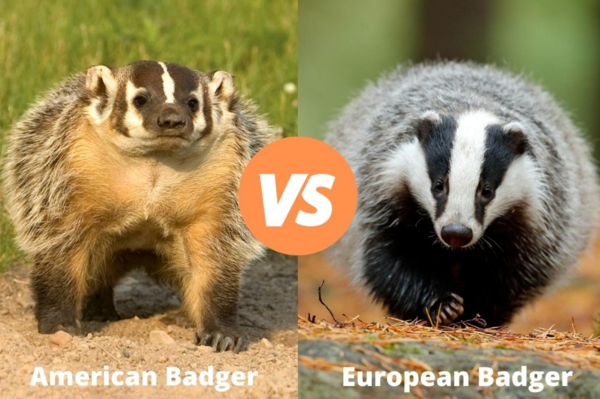badgers-eat.html">Badgers are fascinating mammals known for their unique behaviors and physical characteristics. While both the American badger (Taxidea taxus) and the European badger (Meles meles) share the name "badger," they belong to different genera and exhibit distinct traits. In this article, we will compare these two species, highlighting their differences and similarities in a detailed table for easy reference.

badgers-eat.html">Badgers are burrowing mammals known for their stocky bodies, short legs, and distinctive facial markings. They are primarily nocturnal and have a diet that varies based on their habitat and available food sources.
American Badger: Native to North America, the American badger is commonly found in open grasslands, deserts, and areas with loose soil, making it easier to dig.
European Badger: The European badger inhabits a wide range of environments, including woodlands, grasslands, and even urban areas across Europe and parts of Asia.
Here’s a detailed comparison of the American badger and European badger:
| Feature | American Badger | European Badger |
|---|---|---|
| Scientific Name | Taxidea taxus | Meles meles |
| Size | 24 to 34 inches long | 23 to 35 inches long |
| Weight | 15 to 25 pounds | 22 to 50 pounds |
| Coloration | Grayish-brown with white facial stripes | Grayish with a black-and-white facial pattern |
| Habitat | Open grasslands, deserts | Woodlands, grasslands, urban areas |
| Diet | Omnivorous (insects, small mammals, roots) | Omnivorous (insects, fruits, small mammals) |
| Social Structure | Generally solitary, except during breeding season | Live in social groups called csets |
| Breeding Season | Late winter to early spring | Late winter to early spring |
| Gestation Period | About 6 to 8 weeks | About 7 weeks |
| Lifespan | 5 to 14 years in the wild | 5 to 14 years in the wild |
| Conservation Status | Least Concern | Least Concern |
Both badgers are similar in size, but the European badger tends to be heavier. American badgers typically weigh between 15 and 25 pounds, while European badgers can weigh between 22 and 50 pounds. This difference can be attributed to their varying habitats and dietary availability.
The coloration of the two species differs notably. The American badger has a grayish-brown coat with distinctive white stripes on its face, while the European badger features a more pronounced black-and-white facial pattern, making it easily recognizable.
American badgers prefer open areas with loose soil, which aids their digging behavior. In contrast, European badgers are more adaptable and can thrive in a variety of environments, including urban areas. This adaptability may contribute to their wider distribution across Europe.
American badgers are generally solitary animals, coming together only during mating season. In contrast, European badgers live in social groups called csets, which consist of several individuals. This social structure allows for cooperative breeding and shared responsibilities in raising young.
Both species are omnivorous, but their diets can vary based on local availability. American badgers primarily feed on insects, small mammals, and roots, while European badgers have a broader diet that includes fruits, earthworms, and insects.
Both species breed in late winter to early spring, with similar gestation periods. They can live up to 14 years in the wild, although many factors, including predation and habitat loss, can impact their lifespan.
While the American and European badgers share many similarities, they also exhibit distinct differences that reflect their adaptations to their environments. Understanding these differences enriches our appreciation for these remarkable mammals. Whether you’re a wildlife enthusiast or simply curious about badgers, knowing how these two species compare provides insight into the diverse world of wildlife.
animal tags: American-Badger European-Badger
We created this article in conjunction with AI technology, then made sure it was fact-checked and edited by a Animals Top editor.